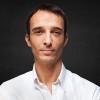Set against the stunning backdrop of Venice, Van Cleef & Arpels is once again showcasing its artistic prowess, this time at the Homo Faber exhibition, “The Journey of Life”. Taking place at the Fondazione Giorgio Cini on San Giorgio Maggiore island until September 30th, the event is a tribute to exceptional craftsmanship, bringing together artisans from across the globe.
Conceptualised by Hanneli Rupert of the Michelangelo Foundation and curated by director Luca Guadagnino and architect Nicolò Rosmarini, the exhibition delves into life’s pivotal moments, ranging from love and nature to childhood, dreams and afterlife. Visitors can explore the ten themed exhibitions, observe live craftsmanship demonstrations, participate in hands-on workshops and indulge in artisan food, drink and fine dining experiences.

The Fée Ondine Automaton
At the heart of Van Cleef & Arpels’ participation is the breathtaking Fée Ondine automaton, an Extraordinary Object that symbolises the maison’s ability to blend haute joaillerie with mechanical wizardry.
Finished in 2017, the Fée Ondine took seven years to complete, the result of meticulous collaboration between skilled artisans and automaton maker François Junod. This unique masterpiece brings together expertise from lapidaries, jewellers, enamellers and woodworkers, pushing the boundaries of what can be achieved with fine materials and consummate craftsmanship.
Perched atop a rippling water lily leaf, the ethereal fairy Ondine with a milky aquamarine face awakens with a delicate movement, accompanied by the chime of crystal-clear melodies. Her wings, crafted using the plique-à-jour enamel technique, shimmer in a gradient of blue hues as light filters through them, creating a mesmerising spectacle. Beneath her, a ladybird in Mystery Set rubies quietly marks the passage of time, reinforcing Van Cleef & Arpels’ ability to blend magic with functionality.
The mechanical marvel unfolds in a scene straight out of a fairy tale. The water lily petals quiver, a butterfly flutters above the enchanted flower and as quickly as the magic begins, the scene stills, the fairy returning to her peaceful slumber.
Every element of this automaton is a testament to Van Cleef & Arpels’ dedication to artistry – from the rippling lily leaf comprising over 60 intricately engraved enamel strips to the delicate diamond and sapphire flowers that complete the tableau.
Floral Flourish
In addition to the Fée Ondine Automaton, Van Cleef & Arpels’ participation highlights the iconic Mystery Set, a setting technique patented in 1933. This innovation, which uses gold rails to allow stones to be set with no visible prongs, has become a signature of Van Cleef & Arpels, showcased in works like the Poppy clip from 1952. The clip’s petals shimmer with brilliance, demonstrating the maison’s skill in creating life-like floral jewellery.
Van Cleef & Arpels’ fascination with nature dates back to the company’s early years. Its first flower-inspired piece, the Daisy clip, was created in 1907 and over the decades, the maison has continued to draw inspiration from the botanical world. Whether in figurative or abstract designs, Van Cleef & Arpels’ floral creations have become synonymous with the brand, celebrated for their grace, detail and time-honoured craftsmanship.

Love in Flight
Van Cleef & Arpels also pays homage to its long-standing connection with love through its Lovebirds creations. Introduced in the 1940s, these endearing bird-shaped clips embody fidelity, symbolising the lifelong bond between two birds. Often depicted perched on a branch, these delicate pieces come in various styles, from realistic interpretations to playful designs.
The Lovebirds collection remains a timeless emblem of romance, offering versatility to the wearer. Whether pinned to a hat, used as a brooch or styled as a hair accessory, these jewellery pieces evoke a sense of elegance and devotion, embodying the spirit of love that Van Cleef & Arpels has championed for over a century.

For more details, check out the Van Cleef & Arpels and Homo Faber websites.







